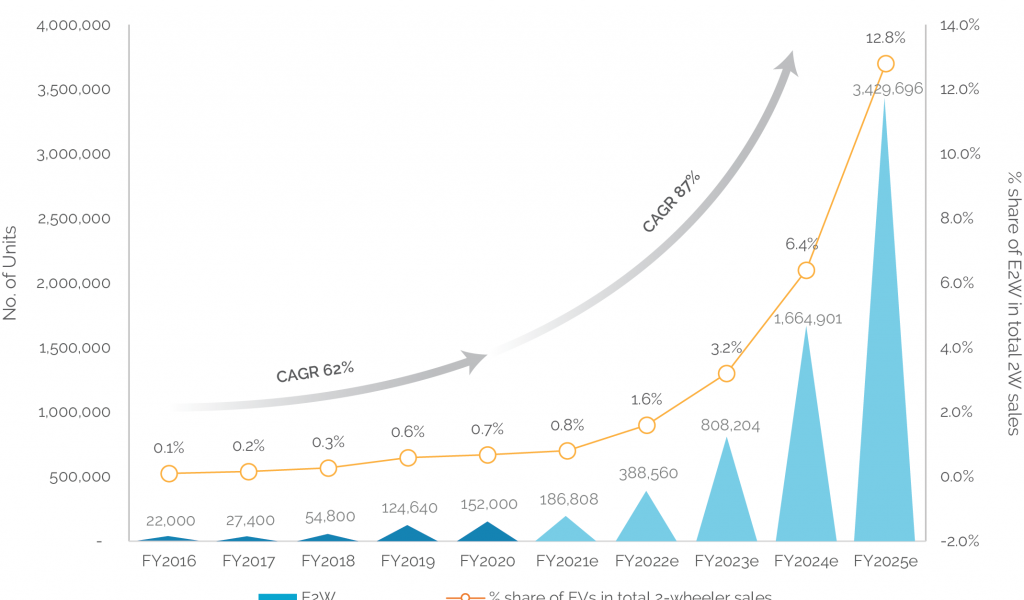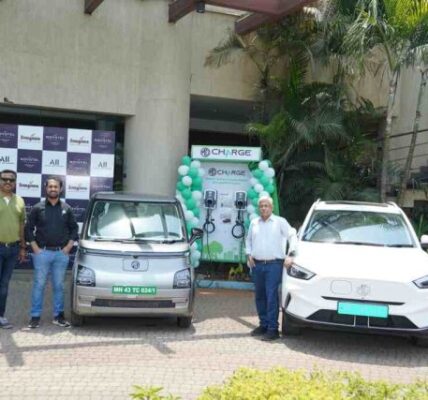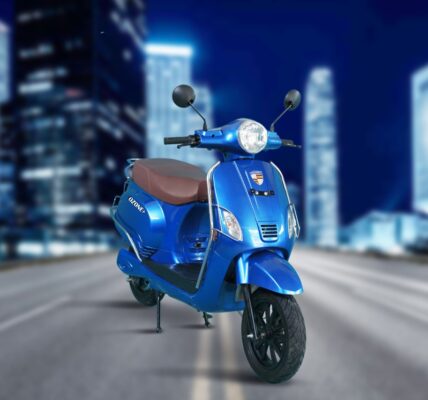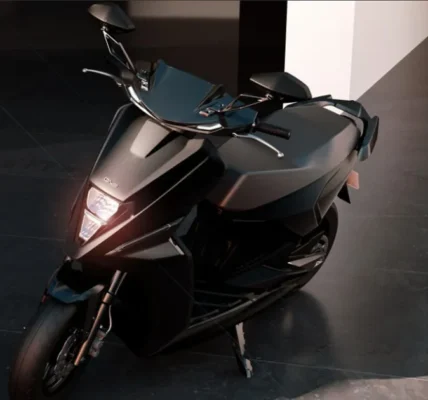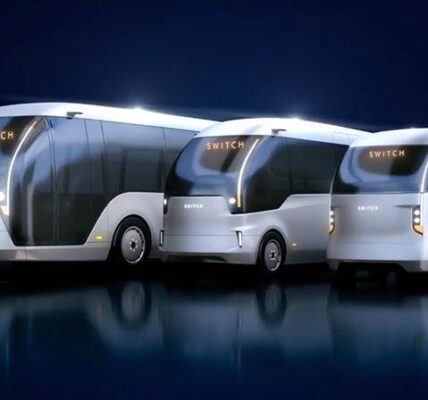India electric two-wheeler market is anticipated to grow at a CAGR of 29.07% during the forecast period to reach USD1,028.04 million by 2028.
Anticipated growth in the market can be attributed to increasing initiatives toward green energy coupled with central and state subsidies. Rapidly increasing development of charging stations, road infrastructure and increase in battery capacity will lead to the growth of India electric two-wheeler market in the upcoming years.
India has recognized the need to bring down pollution levels produced by automobiles. Thus, the government of India is speeding up the acceptance of electric two-wheelers in the market by providing various central and state subsidies. Electric two-wheelers do not have an internal combustion engine. Instead, they have rechargeable battery, which in many cases is removable.
India electric two-wheeler market is majorly divided into scooter/moped and motorcycle, and it is dominated by the scooter/moped segment (non-registered low speed electric two-wheelers are not considered). A considerable number of electric two-wheeler manufacturers are financing greatly in the research and development sector to develop a more efficient battery with additional performance per charge with lesser charging time.
Furthermore, factors such as ease of travel, comfort, efficiency, low operating cost, etc., have increased the demand for electric two-wheelers.
The COVID-19 outbreak made an impact on public health and led to economic crisis across the world. Production and supply chain was severely impacted by the pandemic. The supply of lithium-ion batteries got disturbed due to restrictions imposed by the government of India on shipments coming from China, resulting in stagnant sales of electric two-wheelers compared to the year 2020.
According to the Society of Manufacturers of Electric Vehicles (SMEV), the government is taking initiatives for faster adoption of electric vehicles. Due to the lockdown imposed by the government to prevent the spread of COVID-19, almost all the automotive sectors, including factories, showrooms and workshops, were closed, witnessing a monumental decline in overall production and overall sales of automobiles, although sales of electric two-wheelers have increased due to their rise in popularity among young generation.
Government Initiatives and Environmental Consciousness
In recent years, a shift towards green energy and advanced lithium-ion-based electric two-wheelers has been noticed. Despite the increase in demand and sales of electric two-wheelers, there are several factors which restrict the growth of the segment. As per a study, current prices of electric two-wheelers are higher than their ICE counterpart with similar performance.
Accordingly, for faster adoption of electric vehicles government is providing subsidies under the FAME II scheme and independent state EV policies. Other factors include increasing supply of essential components, declining battery cell prices in conflict with rising fossil fuel prices, public awareness, and acceptability.
Reduction in Cost of Ownership
Electric vehicles can contribute to the reduction in air pollution, carbon emission and oil dependency in India. Due to fewer moving parts compared to ICE vehicles, electric two-wheeler requires less maintenance service cost and overall, less running cost. Also, electric two-wheelers provide a better performance range per charge compared to the same amount of fuel in ICE vehicles.
Electric two-wheeler manufacturers, along with emerging players, are increasing the competition while reducing the cost of ownership in the market with their technologically advanced products, which is expected to aid the growth even further in upcoming years. In India, around 50% of the middle-class population considers intra-city travel for their daily need while keeping minimal cost.
A Shift towards Advanced Technology
In this technological era, constant innovation and technological advancement are driving the automotive sector. Advancement in automotive technologies brings artificial intelligence, more comfort, and advanced features such as brake assistance, anti-theft system, reverse driving for parking assistance etc., high-capacity travel range, less charging time, less maintenance, reduced complexity, and efficiency to the vehicle. The adoption of lithium-ion battery is increasing as it provides more reliable features compared to lead acid battery.
Market Segmentation
The Scooter/Moped segment majorly dominates the India Electric Two-Wheeler Market based on vehicle type, as there are a wide range of electric scooters/moped available to customers with less overall cost than motorcycles.
Based on battery type, the Lithium-Ion battery segment dominates the segment as they have higher effective capacity and less charging time than lead-acid batteries.
Competitive Landscape
Company Profiles: Detailed analysis of the major companies present in India electric two-wheeler market.
- Hero Electric Vehicles Pvt. Ltd.
- Okinawa Autotech Pvt. Ltd.
- Greaves Electric Mobility Pvt. Ltd.
- Ather Energy Pvt. Ltd.
- PurEnergy Pvt. Ltd.
- Ola Electric Technologies Pvt. Ltd.
- TVS Motor Company Ltd.
- Revolt Intellicorp Pvt. Ltd.
- Benling India Energy and Technology Pvt. Ltd.
- Bajaj Auto Ltd.


